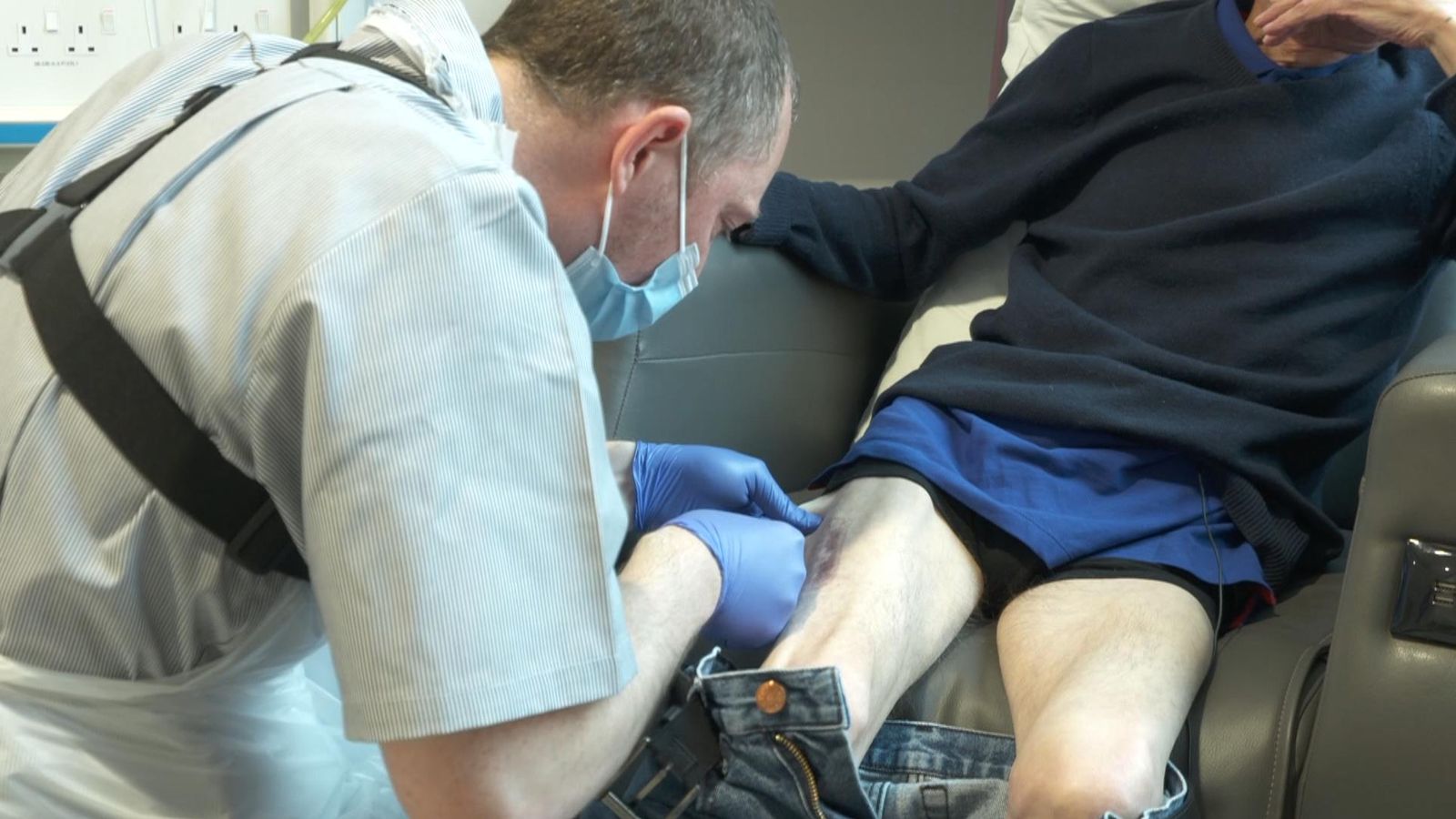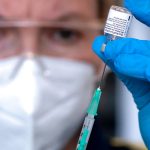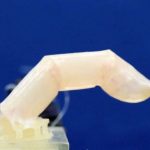A personalised cancer vaccine made from individual patients’ own DNA has produced “really hopeful” early results.
The ground-breaking jab, created using technology perfected in the COVID pandemic, is being given to patients after they complete conventional treatment for head and neck cancers. Patients have a high chance of the cancer returning.
Preliminary data from a clinical trial being run at The Clatterbridge Cancer Centre show that none of the first eight patients given the jab have relapsed, even after several months.
But the cancer has returned in two of eight patients who weren’t immunised.
The numbers are far too small to draw firm statistical conclusions.
But Professor Christian Ottensmeier, a consultant medical oncologist and director of clinical research at the centre, told Sky News he was “cautiously optimistic”.
“I am really hopeful, yes,” he said. “I am quite excited about it. All the data are pointing in the right direction.”
A small clinical trial of the vaccine on patients with ovarian cancer in France and the US is also showing promising results.
How does the vaccine work?
The jab, codenamed TG4050, is made by a French company called Transgene using similar technology that produced AstraZeneca’s COVID vaccine.
DNA from an individual patient’s tumour is cut and pasted into a harmless virus.
When the genetically modified virus is injected into the body, it trains the immune system to be on watch for cancer cells, hopefully destroying them at an early stage before there is even a lump.
Read more: The story of Oxford-AstraZeneca’s COVID vaccine
“The immune system can see things we can’t see on scans,” said Prof Ottensmeier.
“It’s much smarter than human beings.
“If we can train the immune system to pick those cells that would otherwise lead to a relapse at a time when we can’t even see them, then the long-term survival chances for our patients are much higher.”
Doctors are optimistic about the jab because it is so carefully tailored to an individual’s cancer.
Mutations in the DNA of tumour cells vary between patients. By making a unique vaccine for every patient, it should be more effective at targeting rogue cells.
Ten doses down, 10 more to go
Sky News was given permission to film Brian Wright receiving the 10th dose of his vaccine at the Clatterbridge. He has another 10 doses to go between now and January.
Mr Wright had a 16-hour operation almost exactly a year ago to remove a tumour from the floor of his mouth and replace his lower jaw with bone taken from his leg. He then had several weeks of gruelling radiotherapy.
He said the vaccine treatment had no side effects, but he needed convincing to take part at first.
“If you have had cancer in your throat,” he said, “and they say they’re going to inject you with that cancer, it just sounds…’oh no you’re not’.
“But then they explained it won’t give you cancer back, it will make your body immune to that cancer.”
Thirty patients are taking part in the trial for head and neck cancer. Half will be given the vaccine as soon as they finish conventional treatment, with the other half receiving it only when they relapse.
Subscribe to the Daily podcast on Apple Podcasts, Google Podcasts, Spotify, Spreaker
The COVID pandemic has accelerated the development of vaccine technology once considered highly experimental.
The Oxford team of scientists that developed the AstraZeneca jab are using the same “viral vector” strategy to target prostate cancer.
And the mRNA technique that underpinned the Pfizer and Moderna COVID vaccines has recently been used with hopeful results against pancreatic cancer.
Professor Adrian Hill, director of the Oxford team at the Jenner Institute, said: “The pandemic has helped and accelerated the development of a range of new vaccines.
“We learned about their safety in billions of people where previously it was in the thousands, and that’s useful safety data to have.
“And it means there will be a lot more investment in fields like cancer, where we desperately need better therapies.”






















